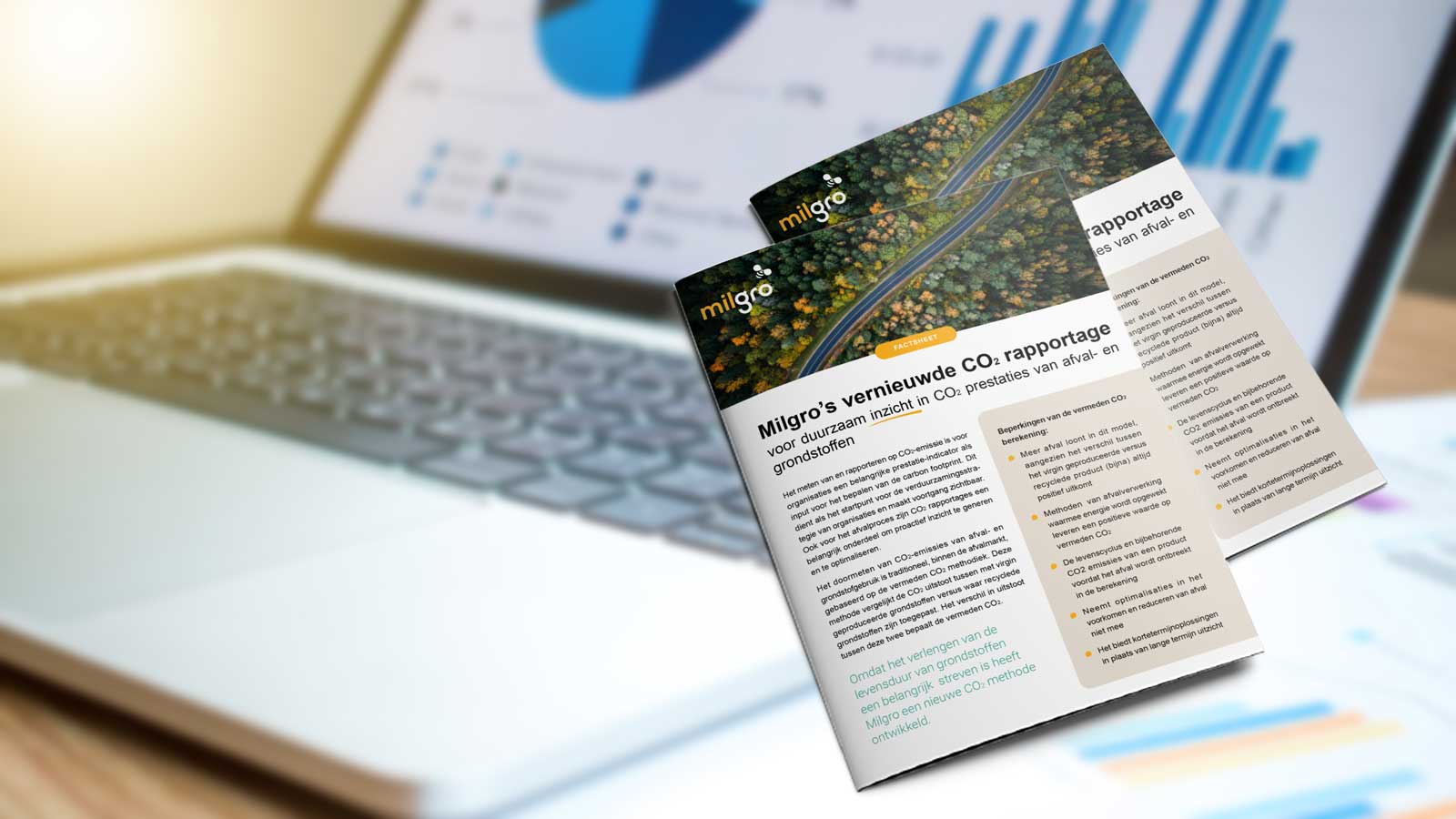Milgro has been offering its clients insight into the CO2 emissions that arise from the waste process for some time now. Traditionally, the avoided CO2 method is used for the waste process. This method compares a production process where newly mined raw materials are used with a production process where recycled raw materials are used. The difference in CO2 emissions determines the avoided CO2.
Avoided CO2 method limiting Milgro's sustainable mission
Milgro's mission is to integrate the management of natural capital into the business operations of organizations. With this we want to create a switch from managing waste to managing raw materials. From linear thinking to circular.
The previously applied method for measuring CO2 does not fit with our circular mission, as this method is based on the linear principle of mining, making, wasting. In the old method, more waste meant a higher CO2 avoided because the energy generated from the waste was compared with fossil energy. This is a relationship that does not fit with the sustainable approach we take with our partners.
Life Cycle Assessment provides more complete and sustainable insight into CO2 emissions
With the updated report, based on the LCA method, CO2 emissions are included over the entire life cycle. This prevents impact from shifting to other life phases within the chain. And it stimulates conscious choices that lead to positive results in all links within a chain. This is the complete and sustainable, long-term insight we want to create and what fits natural capital management.
Milgro's updated reporting has been checked by Royal Haskoning DHV. The CO2 report will be available to our clients from 15 February and can be downloaded via Milgro's online portal.
We regularly publish updates on sustainable innovations, raw materials management and sustainable reporting. To stay informed? Follow us on LinkedIn












